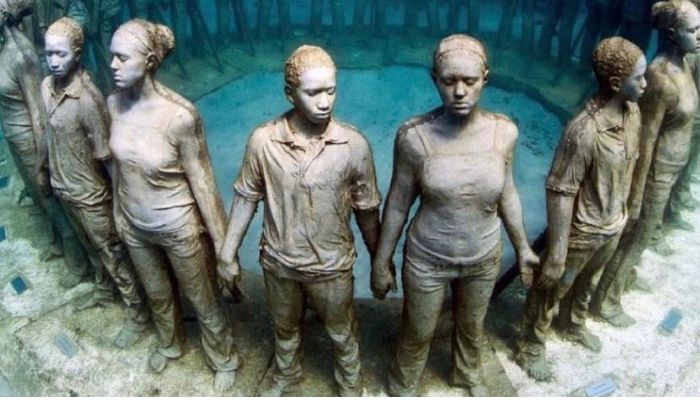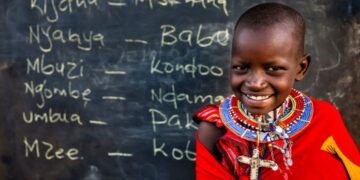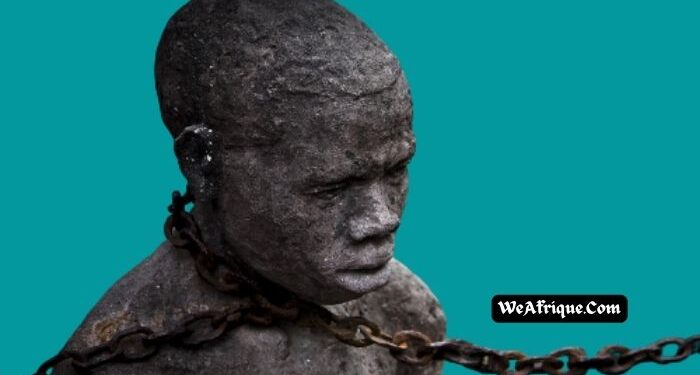Slave Trade is such a sensitive topic to be talked about, especially among black people. There are some shocking facts about the slave trade history that might not have been known to the outside world.
In this article, we will be looking at some of the facts about the slave trade history in Africa and its impact on black culture.
10 Shocking Facts About Slave Trade History in Africa
1. The First Slave Owner in America was a Black Man
As shocking as this may sound, the first person to own slaves in the Americas was Anthony Johnson. He was a black Angolan man who was brought to the British colony as an indentured slave. After earning his freedom in 1621, he was given land by the colony and he ventured into tobacco farming.
He attained great wealth and he began to get indentured slaves. In 1653, John Casor, one of his indentured servants, claimed that his indenture had expired 7 years earlier, and was been held illegally by Johnson. However, Johnson argued in court that Casor was his servant for life. The court sided with Johnson, making Casor the first person to be declared a slave for life in the Americas.
2. Slave Trade Began in Africa long before the coming of the Europeans
Buying and selling of people was a trade in the eastern part of Nigeria, long before the coming of the Europeans. Being sent into slavery was considered a form of punishment for crime, payments for debts, or being a prisoner of war.
Igbo slaves served as domestic servants and laborers. They were also used as sacrifices during religious ceremonies and sometimes buried alongside their masters so that they would continue serving them in the afterlife.
3. Slaves were Exchanged for Regular Items such as Salt and Mirrors
As surprising as this might sound, salt and mirrors were a luxury that only the rich could afford, and these products were not found in Africa. They were brought from the Americas by the slave masters and they gave them to the Elites, in exchange for slaves, who were also sold for other items like sugar, tobacco, cotton, guns, and whisky.
Sadly, slaves were not the only commodity that was exchanged for these mundane items. Others such as gold, ivory, and other precious stone which at the time, Africans didn’t know the value of.
4. The Trans-Atlantic slave trade was also known as the Triangular Slave Trade
The Trans-Atlantic slave trade was known as the triangular slave trade because just like a triangle, the trade had 3 parts.
The first arm of the trade started in Europe specifically, Liverpool, as it had one of the largest cargo ships which could carry up to 1.5 million slaves. The cargo would leave Liverpool with items like textiles, metals, firearms, linen, and alcoholic beverages, which are then transported to the slave coast in West Africa, where these items would be traded in return for slaves.
The second phase of the trade was known as the Middle Passage. It is the voyage from the Slave Coast to either Brazil or a Caribbean island. This phase is one of the most dangerous and fatal phases of the trade as the ships were overcrowded which caused these slaves to die from diseases, starvation, and abuse.
Sometimes, these slaves are thrown overboard as punishment for misbehaving, to lighten the cargo, having a contagious disease, or being too sickly. Some of the slaves committed suicide by jumping overboard or going on hunger strikes.
It was estimated that between 10 to 20 percent of the slaves die during the middle passage. After the voyage across the Atlantic, the slaves were sold at auctions and made to work on plantations across the Americas.
The third and final stage of the trade involved the captain of the ship taking all the money he had made from selling the slaves, and buy goods such as sugar, tobacco, molasses, and other produce, and sailing back to Europe. It also included the Caribbean colonies that will also provide raw materials needed to make goods that would be traded in Africa. these will be shipped to Europe wherein they will be processed and then the ship will set sail for Africa again.
5. Slave Masters doctored the Bible to Justify Slave Trade
The slavers converted their subjects to Christianity and then doctored the Bible to support Slavery. However, they did not allow the slaves to get hold of the Bible because some parts of it discredited slavery.
By the time the slave got hold of the Bible, they had already removed some parts from it. Especially the parts that talked about Israelites leaving their oppressors in Egypt, but left the parts about Joseph being sold to slavery to make it seem normal. Although the author of the slave bible is not known, it is speculated to be the owners of the plantations as a way of discouraging their slaves from revolting.
6. There were Several Cases of Mass Suicides During the Slave Trade

Some groups of African slaves chose death over slavery. An example of such is a group of Igbo slaves from Nigeria which were said to be about 75. They were said to have started a revolt during the voyage, in which they took control of the ship causing it to drown alongside their captors in Dunbar Creek, Georgia. This site is known today as the “Igbo Landing”.
There are several other cases where slaves revolted some of which include the Haitian Revolution, which is considered the most successful slave rebellion in history. It started as a revolt and ended with the creation of an independent state.
7. Some Africa Elites Resisted the Abolition of the Slave Trade
In the 19th and 20th centuries, after the British extended their rule to the south-eastern region of Nigeria, and began to enforce the abolition of the slave trade.
It was said that the elites in Nigeria resisted the abolition of the slave trade. Even after persuasion by British officials, some Nigerian kings insisted that the trade must go on. some of the claimed that it was a trade ordained by God.
As far as the Elders were concerned, the slave trade was a good business arrangement, they thought its abolition was a mere change in the economic policy that affected demand and supply. They did not understand that it was more about human dignity than it was business.
8. Freetown was founded after the Abolition of the Slave Trade
The capital city of Sierra Leone, Freetown, was founded by slave trade abolitionist, Lieutenant John Clarkson. He created the town in March 1792 as a settlement for freed African Slaves who returned from the Americans.
It was initially called the “province of freedom”, where freed slaves were sent after they regained their freedom. They could either go back to their ancestral homes or start a life there. As a result of that, the country of Sierra Leone is one of the most culturally diverse nations in the world, with an ethnic diversity score of 0.7640.
The nation is infamous for its blood diamonds also known as the conflict of diamonds. This war emerged when diamonds from the area were mined and sold to fund the civil war in the country. Sierra Leone also had the largest alluvial diamond in the world and the fourth largest gem-quality diamond, which was discovered in 1972, and was said to weigh up to 968.9 carats.
9. Brazil has the Largest Population of Black People Outside Africa because of its Role in the Slave Trade
It is estimated that more than 50% of the Brazilian population has African ancestry. They are called Afro-Brazilians.
This group of people came about as a result of Brazil is the largest destination for black slaves during the Trans-Atlantic slave trade. It is estimated that about 4.9 million African slaves were imported to Brazil.
The major group of slaves brought to Brazil were the West Africans, which were predominantly Yoruba, and the Bantu people of present-day Angola, Congo, Zimbabwe, and Mozambique. The Yoruba people of West Africa later became known as the “Nago” which was a derogatory term used to refer to them by the Dahomey people.
Asides from the huge slave deposits in Brazil, the Black population grew also due to the fact that the female slaves became concubines to the slave masters, and in some cases, wives, which in turn gave birth to mixed raced children, known as the “Mulato”.
See Also: 20 African Cultural Practices That Are Shocking
10. The Subject is a Central Message in Many Artistic Works
The subject of slavery is a very sensitive topic among Black people. It has become a central message in many movies, books, songs, and artworks.
Some movies with the theme of slavery include “12 Years a Slave” (2013), “Django Unchained” (2012), “Glory” (1989), ” Slavery by Another Name” (2012), and “The Birth of a Nation” (2016).
Additionally, many Black artists have sung songs that reference the central message of slavery. Some of these include Beyonce’s music video “Love Drought”, she was seen walking into the water as a way of paying tribute to the “Igbo Landing”. Other songs that have the central message of slavery are Oceans – by Jay Z, Queen of the field- by Alicia Keys, Lead me on -by Amy Grant, and Dirty Water- by Lecrae.
There are also museums that have been erected in honor of the Slave trade. they are Slave History Museum and Old Residency, both in Calabar, and the Badagry Heritage Museum, Mobee Family Museum, and The Seriki Faremi Slave Museum, all in Badagry, Lagos state. Others include the International Slavery Museum, Liverpool, Nkyinkyi Museum, Ghana, and Stone Town in Zanzibar.





















Discussion about this post